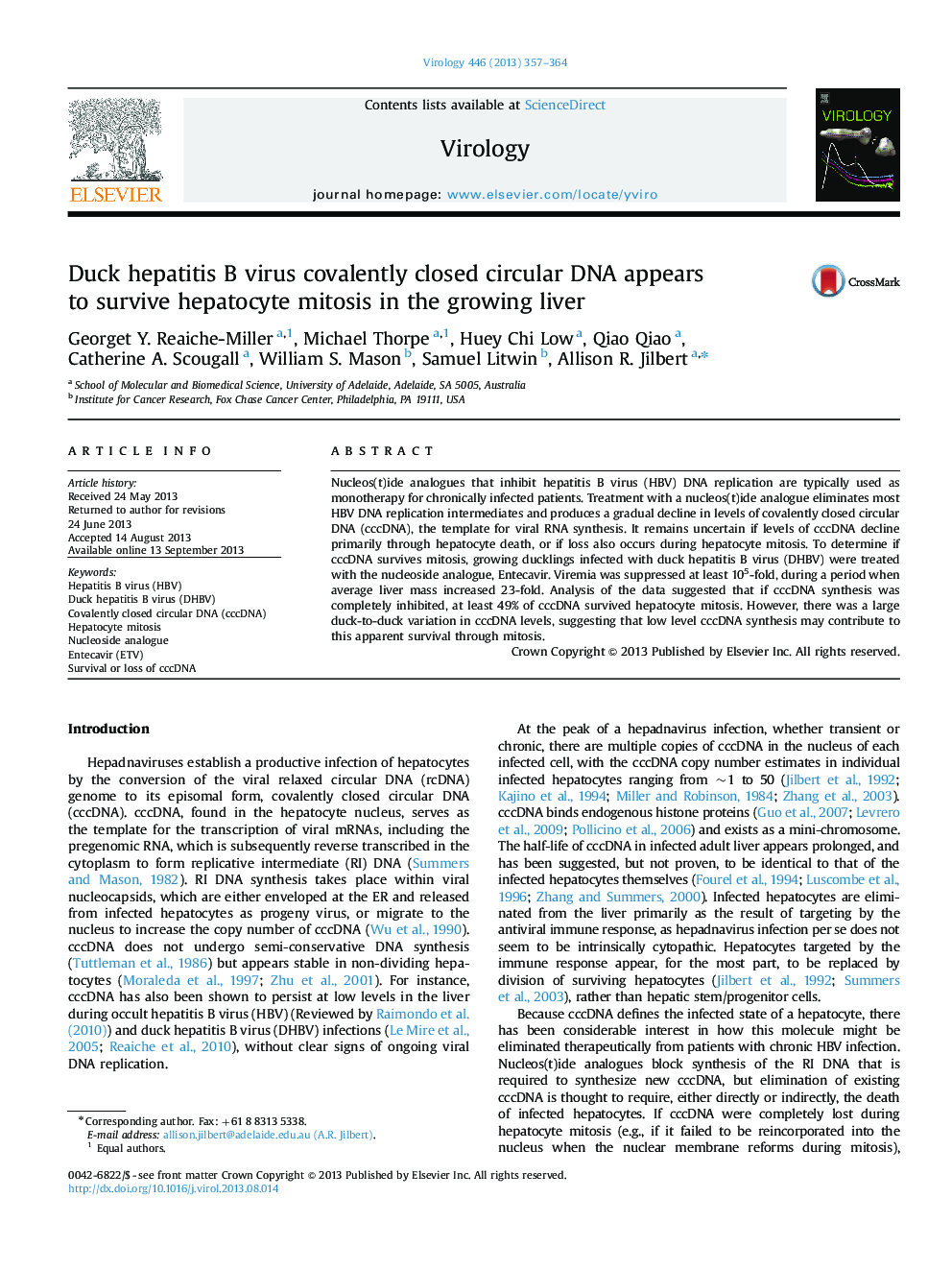| Article ID | Journal | Published Year | Pages | File Type |
|---|---|---|---|---|
| 6140696 | Virology | 2013 | 8 Pages |
â¢The hepatitis B virus nuclear template is covalently closed circular DNA (cccDNA).â¢cccDNA was studied during liver growth in duck hepatitis B virus infected ducks.â¢Virus DNA replication and new cccDNA synthesis were inhibited with Entecavir.â¢At least 49% of cccDNA appeared to survive hepatocyte mitosis.â¢Low level virus DNA synthesis may contribute to survival of cccDNA through mitosis.
Nucleos(t)ide analogues that inhibit hepatitis B virus (HBV) DNA replication are typically used as monotherapy for chronically infected patients. Treatment with a nucleos(t)ide analogue eliminates most HBV DNA replication intermediates and produces a gradual decline in levels of covalently closed circular DNA (cccDNA), the template for viral RNA synthesis. It remains uncertain if levels of cccDNA decline primarily through hepatocyte death, or if loss also occurs during hepatocyte mitosis. To determine if cccDNA survives mitosis, growing ducklings infected with duck hepatitis B virus (DHBV) were treated with the nucleoside analogue, Entecavir. Viremia was suppressed at least 105-fold, during a period when average liver mass increased 23-fold. Analysis of the data suggested that if cccDNA synthesis was completely inhibited, at least 49% of cccDNA survived hepatocyte mitosis. However, there was a large duck-to-duck variation in cccDNA levels, suggesting that low level cccDNA synthesis may contribute to this apparent survival through mitosis.
